We’ve always believed that no matter the size of your space, your home should reflect your style—and yes, that goes for 400-square-feet apartments too! We teamed up with the One Kings Lane Interior Design team to answer all the questions that come up in small-space living and designing. Check out all their advice below.
Studio Apartments
Studio apartments are a design-lover’s ultimate challenge. With only a few hundred square feet (if you’re lucky) to transform, every choice you make must be perfect. Intimated? Don’t be.
Our Best Advice
Keep it simple. Marie Kondo said it best: Your possessions should spark joy. If they don’t, it’s time to toss. “Dispense with unnecessary clutter,” says One Kings Lane designer Jordan Schehr. This is the first (and least fun) step of any small-space design scheme. (The maximalist in us hates the idea of getting rid of anything, which is why we wrote a whole guide on artful minimalism.) Instead of focusing on what you can’t display, focus instead on what you can. “Showcase the items that mean the most to you,” says designer Shannon Frappied. Being the curator of your own life is one of the most fun and challenging things about living in a studio.
Use workhorse pieces. Even the most spacious studios require a bit of creative thinking when it comes to storage. “Make your furniture work for you,” says One Kings Lane designer Jess Hutchinson. “Maybe it’s a couple of storage ottomans as a coffee table or a dining chair that doubles as your desk chair. You should try to make the most of each piece of furniture you bring into the space.”
Always Avoid
Insufficient illumination. City living means that sunshine can be scarce. “Never block the source of natural light,” says Shannon. “Light is key in helping make a space feel open and bright.” If your studio has little or no natural light, bring it in artificially. Use sconces and picture lights to save on valuable surface real estate. If you have room for lamps, bring in all that you can. They’ll provide the most flattering and comfortable lighting of all your options. You can also get smart with your furnishings and choose metallic finishes to bounce light around the room. For more on lighting, check out our complete lighting guide here.
Tipping the scale. “Be sure to keep your furniture in scale with the size of the room,” says Jordan. Go too small and you’ll feel like you’re living in a doll house. Go too big and you’ll hardly be able to move around. “Steer away from large, overstuffed furniture like sectionals,” he adds. At the same time, Shannon suggests going big (or biggish) with wall decor: “Style walls with midsize to large-scale art to maximize depth and perspective.”
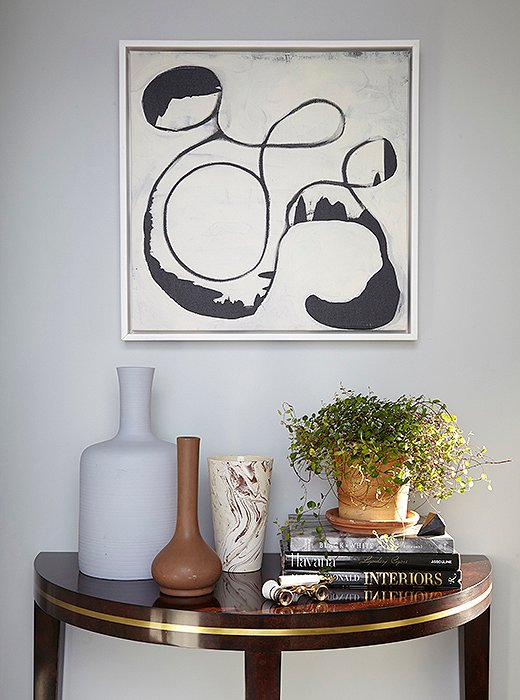
Every vignette presents another opportunity for clutter in a small apartment, so opt for a curated collection of goods, as this renter did.
Organize and Optimize
Every square inch of a studio should be optimized (and organized) for easy living. Studio apartments face a duality not found in many other spaces, something we’ve dubbed the Renter’s Paradox: You need to fill—but not cram—the small room with furniture to make it appear bigger. “Just because a space is small doesn’t mean you can’t have all the pieces that make up a great space,” says Jess.
Optimization efforts. The best plan of attack begins with optimization efforts. As mentioned above, choose multitasking furniture. “Opt for upholstered side chairs that can double as dining chairs, and find an entry console that can double as a desk,” says Shannon. Jess suggests going with a classic sleeper sofa so that you can host overnight guests. “I also find benches can make great coffee tables,” she says.
Organize creatively. Studio-dwellers learn quickly that the best solutions to their design dilemmas are creative ones. Think of your apartment as a stage. From the outside, it will look beautifully put together. But as actors and stagehands know, the necessary props are always hidden within arm’s reach. Beyond hardworking pieces like storage ottomans, add baskets, boxes, and catchalls for everything from mail to chargers to keys. Clutter can’t overtake your studio if everything has a place. The more organized your home is, the more relaxed it will feel.
Embrace the Space
In a studio, the living room is the bedroom is the kitchen is the dining space. Yet the apartment doesn’t have to feel like one big room. Our team suggests thinking outside the box to create zones. One option is to physically separate spaces. “I love a room screen or some curtains to help separate spaces in a studio,” says Jess. Another is to let color and pattern do the job for you. “You can always use paint or wallpaper to define one space from another,” says Shannon. If you aren’t down for painting half your apartment (or can’t because of your lease), lighting can also help play up that visual separation. “Different light sources, like table and floor lamps versus overhead lighting, help create different zones of space and function,” says Jordan. Plus, switching flush mounts is quick, easy, and renter-friendly!
Our Must-Haves for a Studio
- Sleeper sofa
- Skirted storage ottoman
- Task and overhead lighting
- Removable wallpaper
- Any and all baskets
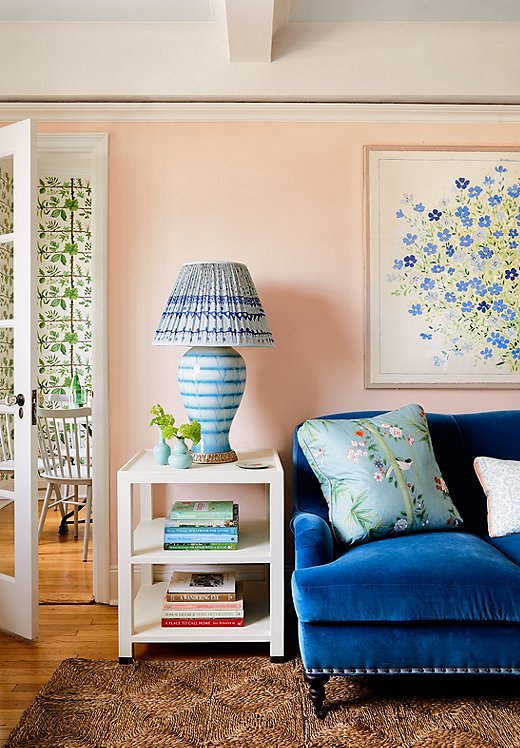
We love the way designer Lilse McKenna played with the scale of the lamp in the small West Village apartment of publicist and blogger Nan Philip. Lilse definitely knows a thing or two about designing for small spaces. Check out the makeover she did in her own West Village apartment just a few years ago! Photo by Read McKendree/JBSA.
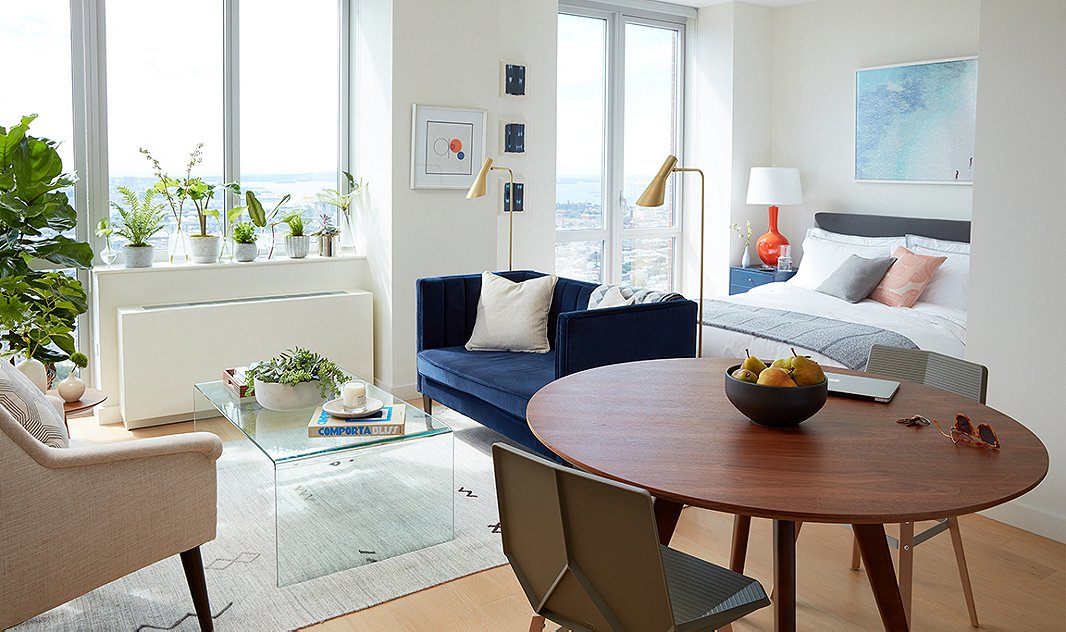
Full windows bring loads of natural light into this studio, allowing the One Kings Lane Interior Design team to have a bit more fun with color. Tour the entire studio makeover here.
One-Bedroom Apartments
When it comes to design, one-bedroom apartments typically follow the same rules as studios. Organize and optimize should still be your guiding principles, along with the added importance of storage so that your rooms are clutter-free. And while having a separate bedroom can be wonderful if you’re used to living in a studio, the bedroom is apt to be fairly small. Here are a few of the best ways to maximize it, according to our team.
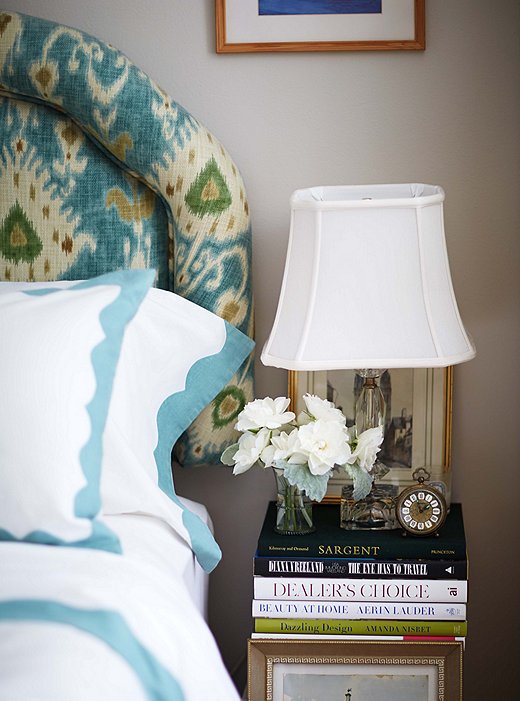
This New York blogger stacked her collection of books next to her bed. Instead of trying to hide them, she opted to place a lamp on the stack and call it a bedside table. Tour her tiny pad here.
Layout Lowdown
Our Must-Haves for One-Bedroom Living
- A sideboard that doubles as a dresser
- Floor mirrors
- Simple bedding
- Rugs, correctly sized! (Check out our guide here)
- Perfectly scaled art
Kitchen Compendium
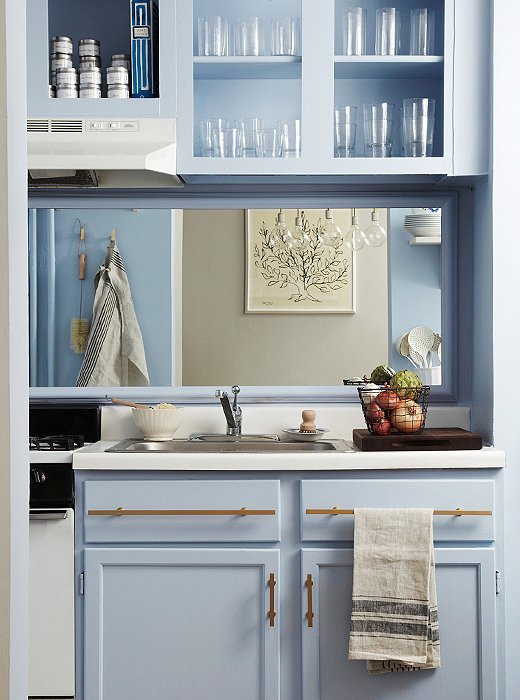
This renter employed a genius kitchen hack to make their small space feel bigger. Check out the full tour to get the scoop!
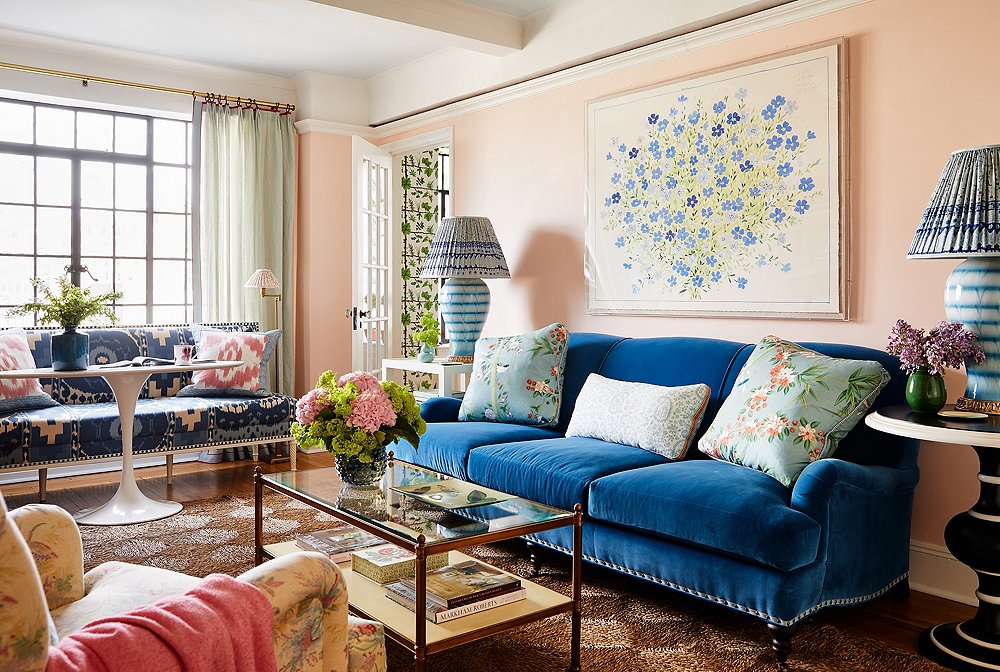
Join the Discussion